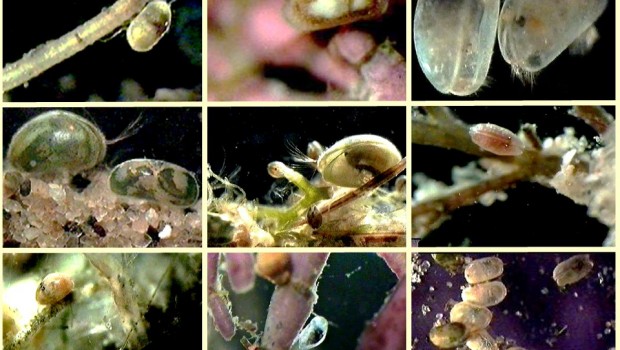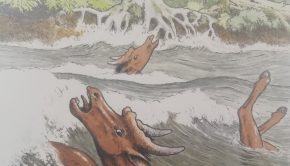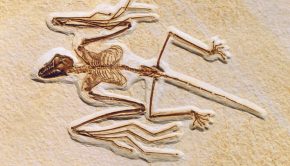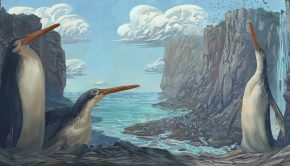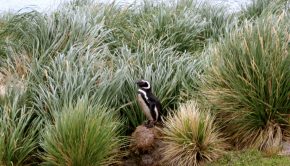Episode 35: Ostracods
Ostracods are tiny crustaceans (relatives of shrimps, crabs and water-fleas), distinguished by having a shell that is easily fossilised. As microfossils, by virtue of a long and rich fossil record, ostracods are extremely useful for determining the age of the sedimentary strata in which they are found, as well as providing clues to the nature of the environments and climates in which those deposits were formed. The first ostracods lived in shallow continental shelf seas during the early Ordovician period nearly 500 million years ago, later spreading and diversifying into deep oceanic as well as continental environments such as lakes and rivers. Today, as living organisms, they are globally widespread and diverse, inhabiting almost every kind of aquatic environment from the abyssal depths of the oceans to freshwater ponds.
We’re joined by Prof. Dave Horne, Queen Mary University of London, who’ll guide us through the microscopic world of the ostracod.
Podcast: Download (Duration: 38:27 — 52.8MB)
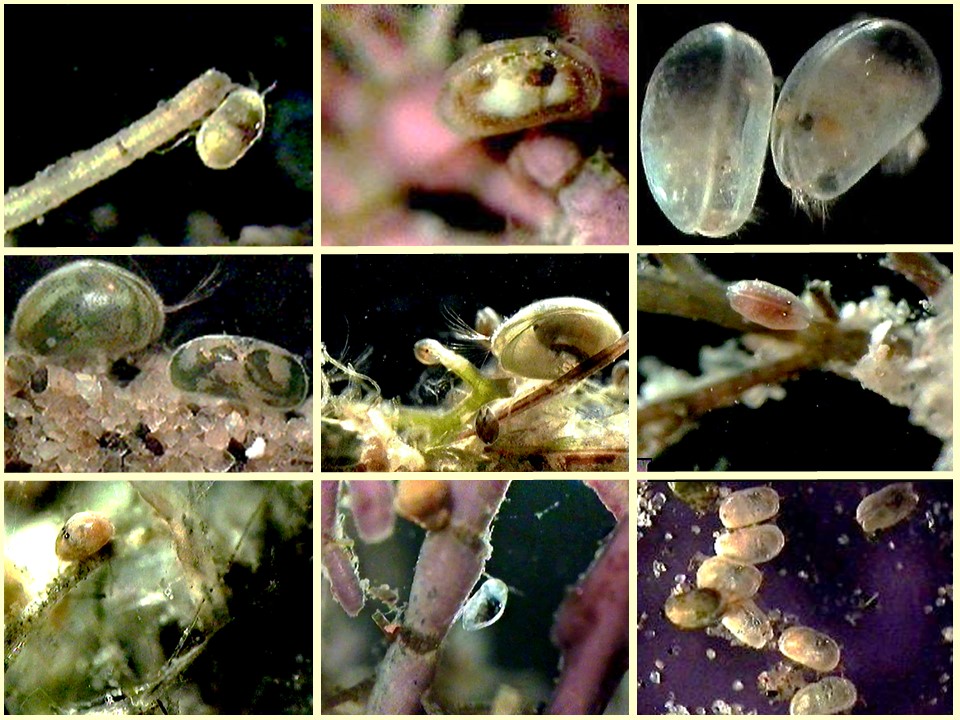
Living ostracods. A selection of still images taken from high-resolution video-microscopy recording of living marine, brackish-water and freshwater ostracods. The individuals are between 0.5 and 1.5 mm long. Image credit CC BY-SA 4.0.
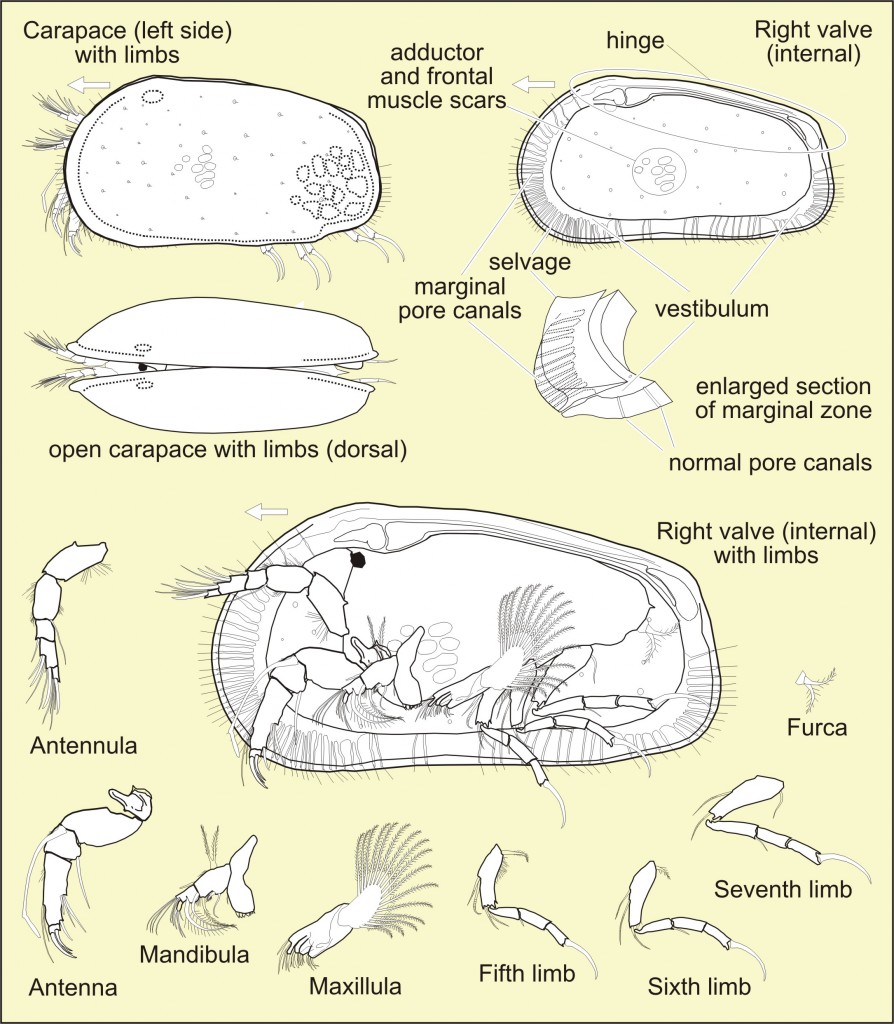
Morphology of ostracod shells and limbs. Based on a typical cytheroidean podocopid ostracod. Image credit CC BY-SA 4.0.
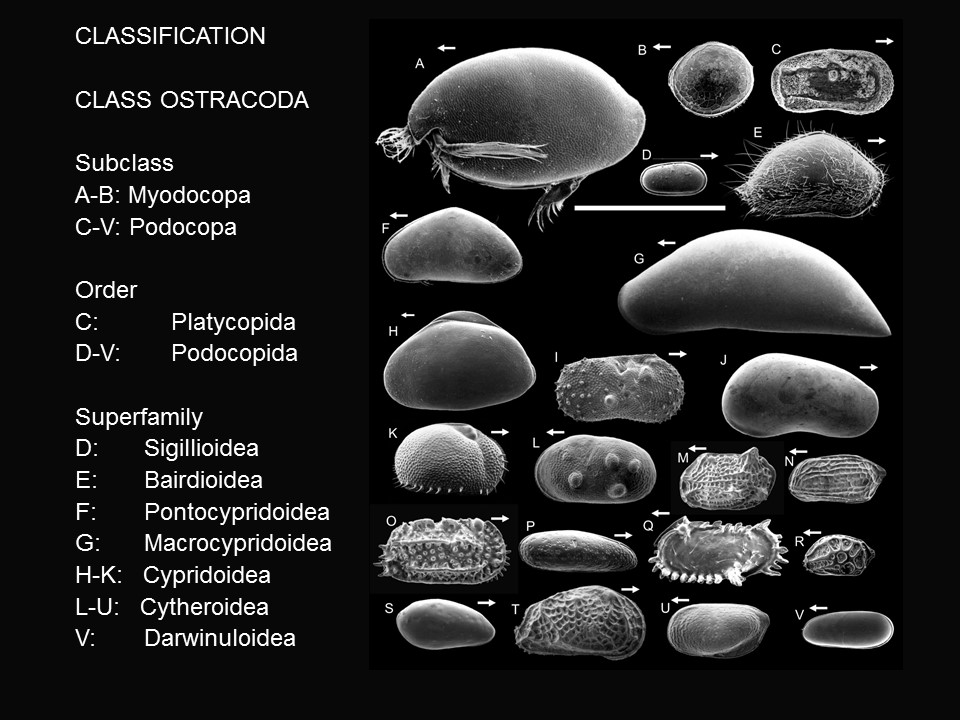
Ostracod shells. Scanning Electron Microscope images of shells of representatives of the main ostracod groups living today. Scale bar = 1 mm. Image credit CC BY-SA 4.0.
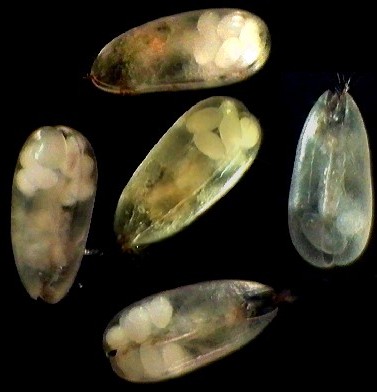
Darwinuloidean ostracods. These are all adult female specimens (about 0.6 mm long) with eggs or juveniles in their brood chambers. Darwinuloideans are freshwater ostracods with a long fossil record. Males are exceptionally rare and darwinuloideans seem to have been reproducing asexually (by parthenogenesis) for more than 200 million years, although theoretical considerations suggest that such organisms, lacking sexual reproduction to provide genetic mixing that would enable them to adapt to changing environments, should be doomed to extinction in only a few million years. For this reason they have been described as “ancient asexual scandals”. Image credit CC BY-SA 4.0.
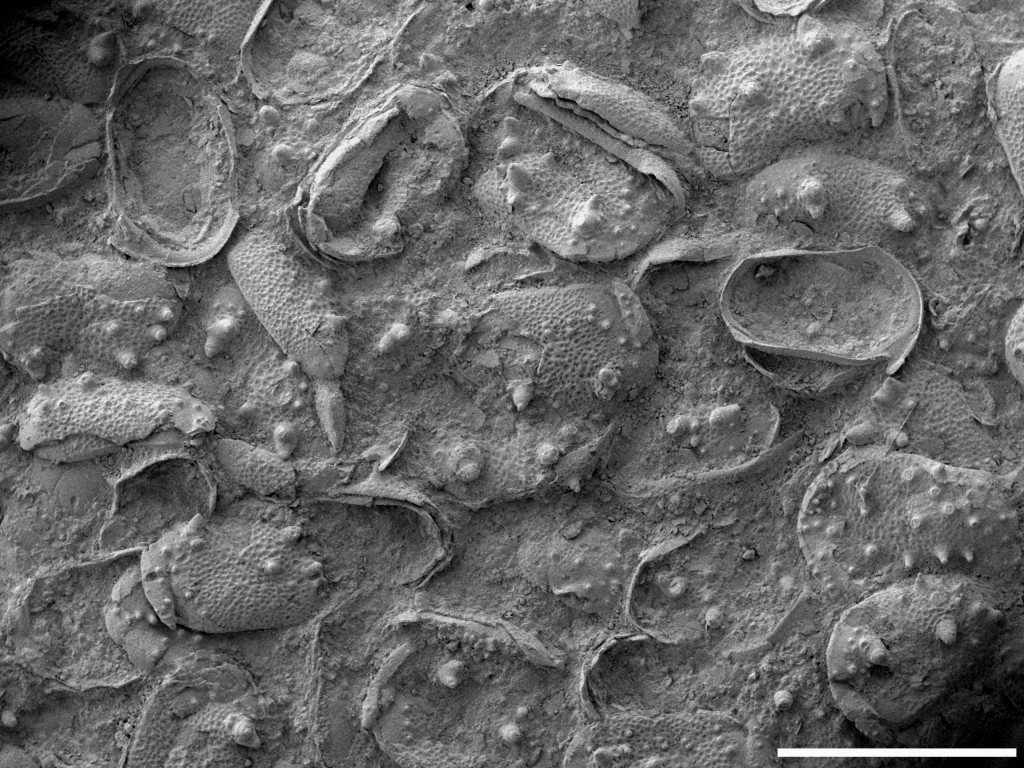
Wealden ostracods. A Scanning Electron Microscope image of a bedding-plane concentration of early Cretaceous freshwater ostracod shells (Cypridea sp.) that accumulated on the floor of a lake. Scale bar = 1mm. Image credit CC BY-SA 4.0.
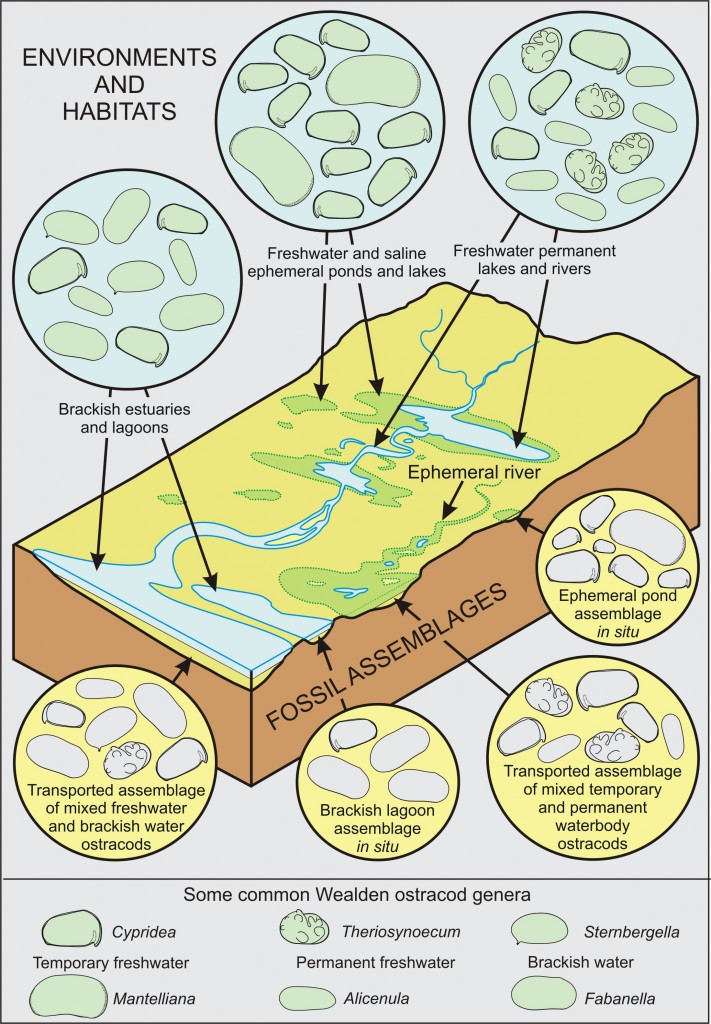
Purbeck-Wealden ostracods. Non-marine deposits in the latest Jurassic and early Cretaceous of England are rich in the shells of ostracods that inhabited permanent waterbodies such as coastal lagoons and lakes (both freshwater and saline) as well as ephemeral ones such as temporary freshwater ponds. Rivers in flood sometimes transported and mixed the assemblages from different environments. Image credit CC BY-SA 4.0.
Find out more about ostracods
Here are some links to some web sites offering information and images of living and fossil ostracods, and other links related to the content of this episode.
Robin Smith: Ostracod research at the Lake Biwa Museum, Japan
NANODe: North American Non-marine Ostracode Database
OMEGA-Locate: a Citizen Science project
Giles Miller: Curator of Micropalaeontology’s blog
Palaeocast Episode 15: Micropalaeontology
Ancient Human Occupation of Britain project website

